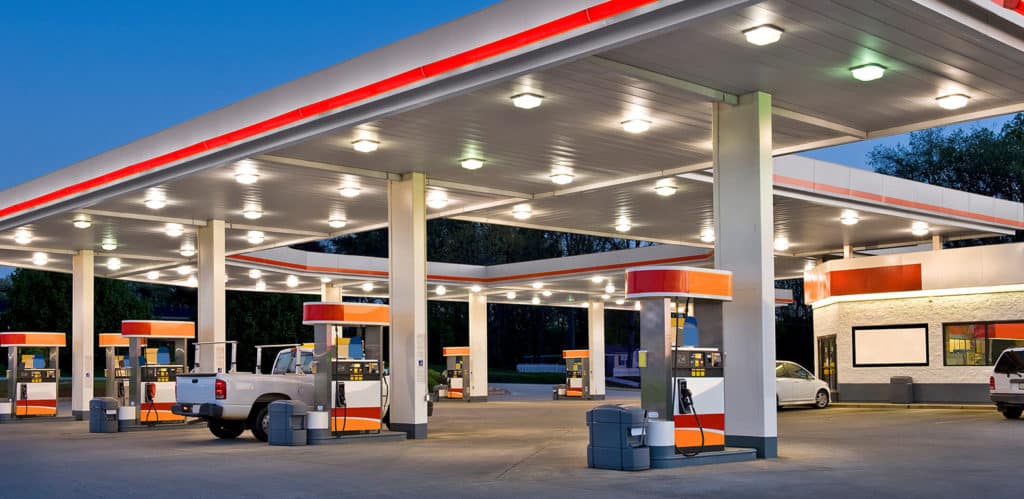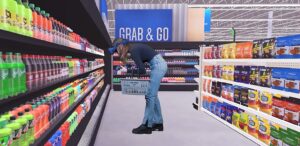6 Things in Future Gas Stations and Convenience Stores

Consumers influenced by the pandemic and an increasingly digital world are accelerating convenience store innovation.
The increasing adoption of electric vehicles and pending self-driving cars/fleets are reshaping the future of convenience stores. These new technologies are paired with increasingly digitally reliant consumers, which require convenience stores to rethink their shopping experiences and the role they play in consumer's lives to develop gas stations of the future.
Gas stations have been considered high contact areas during the pandemic which decreased convenience store visits. There has been fear surrounding touching gas pumps or merchandise and interacting face-to-face within stores. In addition, more individuals are working from home so there is less need for trips to the pump.
As reliance on fuel stops and snacking quick trips begins to lose viability as a successful model, what is the future of gas station business? It is time to incorporate new offerings and engagements that reinvent the value proposition for the convenience channel as consumer behaviors and preferences shift.
1. Online ordering
An increasingly digital and health conscious world is leading to shoppers that feel inconvenienced by having to go inside of gas station storefronts. The c-store is losing its convenience advantage due to numerous necessity-driven retail improvements like BOPIS, drive-thru and curbside pickup.
In order to offset declining fuel sales and compete with enhanced experiences at larger retailers, innovative convenience stores are enhancing their digital customer experiences and products to meet consumer expectations. The large c-store chain 7-Eleven launched a pickup feature on its delivery app that allows customers to order and pay for items ahead of time and get products delivered.

“The new pickup option on our 7NOW delivery app is an example of how we’re meeting customer’s needs to be in and out of stores quickly with minimal touchpoints and increased physical distancing, while also making life a little easier.” - Chris Tanco, 7-Eleven Chief Operating Officer
2. Specialty food and retail
New technology and consumer behavior has established a world where fewer people smoke, buy fuel or need to ask for directions. These essential trips were a staple in the convenience store industry because they drove sales of goods inside the store, which is how most gas stations earn profits. In fact, items sold in-store only account for roughly 30% of the average gas station’s revenue, yet bring in 70% of the profit.
This means that the gas and convenience businesses must invest in more specialty food and retail in order to maintain their customers. Regional chains like Kwik Trip and Wawa are examples of c-stores that have focused on establishing attractive product assortments in-store to compete with local coffee shops, restaurants and even grocery stores.
To follow this strategy, many companies are adopting modern solutions like virtual reality to efficiently optimize their product offerings and assortments. ReadySet is a virtual reality store planning software that provides a fast and cost-effective way to innovate convenience store layouts and planograms. It provides superior market research using VR headsets with eye-tracking that gain accurate customer insights. The shopper-approved ideas can then be implemented in-store to improve gas station merchandising and increase sales.
Steve McLean, CEO of ReadySet, has over 20 years of experience developing retail solutions for Fortune 500 companies. When asked about his take on the future of the c-store, McLean mentioned his experiences leveraging virtual reality to test concepts and engagement variations to optimize solutions for evolving retail.

“I think the routine based relationship between the consumer and the c-store will be tested with the shift to EVs and the fall-off of the fuel trip. A significant part of the convenience proposition of the convenience channel is the combined trip aspect. The EV ability to “fuel” vehicles at home and the length of time required to charge current lithium-ion battery technology reduces both the frequency and value proposition of the quick trip.
Larger box retail might be advantaged by offering electric charging tied to loyalty because the duration of the trip is better aligned with the required changing time. Pending llithium-metal battery innovation will charge faster but will also provide longer EV ranges and therefore reduced stops.
The convenience channel will need to evolve their offering and reimagine their role relative to the routine of the consumer to maintain their share of trips. Over the last decade we’ve seen successful operators shift focus to a meal destination. Further evolving the on-premise offering and finding new ways to drive engagement within a small footprint will be critical to the future success of the channel.” - Steve McLean, CEO of ReadySet VR
3. Customer loyalty programs
Driving convenience store loyalty has always been a challenge for the industry due to fuel pricing fluctuations and locational dependence. The recent emergence of gas station rewards programs have made great strides in providing value that establishes returning customers.
These programs not only provide financial benefits to shoppers but also support retailers with customer data that can be used to improve assortments and offerings. This generates a more personalized experience for the modern customer that is required in order to maintain their loyalty.
The emergence of electric vehicles further amplifies loyalty program strategies because drivers will become more selective on the establishments they visit due to the greater amount of time they are spending there.

4. Touchless fueling
The convenience store industry is experiencing added disruption during the pandemic because gas pumps are considered high contact areas. This heightened awareness surrounding health and safety is leading convenience retailers to develop contactless environments that will continue bringing in customers.
In fact, ExxonMobile debuted contactless payment solutions in 2020 that allowed consumers to pay for fuel using their smartphones. Individuals were able to do so by either scanning QR codes at the pump, or those that had the Exxon Mobil Rewards+ app would automatically detect when they were at a pump and intuitively open the app for them to pay.
This shows that not only can fuel stations create a safer environment using contactless services and mobile apps, but they can also deliver a more seamless customer experience.

5. Electric Vehicle Chargers
The future of gas stations with electric cars is indisputable. As these new age vehicles are becoming more popular, many gas stations and convenience stores in the United States are deciding whether to invest in electric-vehicle charging stations so that they can potentially profit from selling snacks, cigarettes and other higher-margin products while drivers wait.
In fact, 7-Eleven plans to install 500 DC fast chargers at 250 locations across North America by the end of 2022. Unlike their fuel filling stations, these charging ports will be owned and operated by 7-Eleven.

6. Entertainment
The charging stations that are put in by convenience stores provide a fast charge to an electric vehicle (EV) in about a half-hour. Aside from promoting traditional merchandise sales, this means that gas stations have the ability to capitalize on electric charging customers that will require a longer waiting period at their location.
The traditional retailers selling fuel and snacks may be a thing of the past as convenience stores begin providing full entertainment experiences instead of fill-in grocery trips. Gas retailers can gain competitive advantage and differentiate themselves through providing new offerings such as parks, local food establishments, cafés, live music, massage chairs, work spaces and even gyms.

It is clear that to establish a successful gas station of the future, retailers need customer focused store operations. It is likely that convenience stores offering mobile apps, personalized assortments, loyalty programs, new technology and adequate entertainment will rule the digital age.
Subscribe to our newsletter
Get our blogs and the latest retail news delivered to your inbox monthly.
Recent Posts
6 New Uses for Virtual Reality in Retail Planning
Top brands and retailers are taking advantage of VR for store planning and retail assortment planning. Retail space planning has traditionally required significant investment in physical spaces, equipment and products. With each category, product promotion, and display messaging needing to be shopper tested and approved before its implementation. This slow, costly process often leads to…
4 Hot Retail Topics at RICE 2022
After attending the Chicago Retail Innovation Conference & Expo 2022, we recap the biggest trends in retail discussed by top brands and retailers. There are numerous new business practices being implemented in physical stores post-covid. From introducing live commerce to reducing your carbon footprint, let’s explore every hot topic at the retail innovation conference 2022.…
ReadySet, which develops VR innovation capabilities for Retailers and CPGs, secures $3.25 Million in funding
Financing to fund growth of ReadySet’s development team and further product capabilities for VR retail innovation. ReadySet Technologies, a virtual reality (VR) software company based in De Pere, Wisconsin that provides digital innovation tools to consumer brands, has announced $3.25 Million in new funding led by Rock River Capital and includes participation from Mendota Venture…



